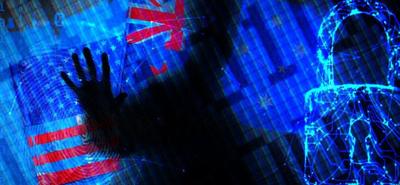Published Mar 08, 2020 by Xiph
How Australia’s big brother transformed into Big Brother Tracking the erosion of personal privacy in the United States isn’t as difficult as you’d think. While we could go back decades, let’s simply start at the terrorist attacks of 9/11 and move forward through time.

Ever since that fateful day, one national security program after another has been implemented under the guise of preventing the possibility of further terrorist attacks, but as we all know, there’s much more to it than that. Two decades later and instead of any considerable attempt to reform the surveillance state, governments and corporations have found new and more insidious ways of increasing its power.
Capitalising on a vulnerable moment
If there was ever a time and place for the US government to have an excuse to broaden the scope of its domestic surveillance mechanisms, the wake of 9/11 was it. The now-infamous USA Patriot Act (2001) allowed the CIA to access citizen information with a never-before-seen reach. That information included phone calls, emails, online activity, financial records, educational records, as well as criminal investigation/grand jury proceedings. Mass surveillance without a warrant was now a legitimate process and the average American citizen was now a suspect and it was all merely a part of the ‘war on terror’.
The NSA matches reach with scale
Edward Snowden would eventually reveal to the public that Stellarwind —a National Security Agency surveillance program created in 2003— allowed the NSA to monitor the metadata of citizen calls and texts, as well as intercept any international call that involved one U.S.-situated party. Basically, it took what the Patriot Act had implemented and carried it out on a massive scale. Each and every day, millions of electronic communications were automatically screened for any suggestion of any link to Al-Qaeda and if flagged, were sent to the FBI. Despite a leaked FBI document from 2006 claiming that Stellarwind was ineffective in combatting terrorism, the program wasn’t shut down until 2019.
Looking into the PRISM
Perhaps the most significant revelation from the Snowden leaks was the existence of PRISM and its partner program Upstream, both NSA surveillance tools that travelled deeper into the lives of ordinary American citizens. The outward purpose of PRISM was to screen the data of foreign nationals but when put into action, the program also targeted U.S. citizens through accessing their Gmail, Facebook, Apple (and a slew of other) user accounts and collecting communications, files and photos. Snowden’s actions prompted President Obama to declassify further information about PRISM, which only shed more light on the increasing power of the United States as a surveillance state.
The two faces of Obama
At first, it seemed as if Obama planned to put the brakes on the mass surveillance machine. Prior to the presidency, in a speech to the senate in 2005, Obama defended civil liberties and insisted that the Patriot Act not be renewed. Three years later, after opponents labelled Obama as being soft on terrorism, the new President performed a complete 180-degree turn and stated that “In a dangerous world, government must have the authority to collect the intelligence we need to protect the American people”. Unfortunately, that turn was more than a campaign strategy and Obama started where George W. Bush had left off, implementing further mass-scale surveillance measures over the course of his presidency.
The Bahamas test
Under Obama, the NSA carried out what is perhaps the most comprehensive mass surveillance experiment in history, by bugging an entire country. The Bahamas had no earthly idea that the United States spent two years monitoring every single incoming and outgoing phone call made and received by every single citizen. The operation, called SOMALGET, turned the country’s relatively small population into a test bed for surveillance system “deployments, capabilities, and improvements”, in order to tweak the powerful technology for wider and widespread use.
Post-Snowden whistleblow
In the wake of the Snowden leaks, Obama was pressured to reform the NSA and in 2015, he passed the USA Freedom Act. The aim of the act was to restrict the NSA from retrieving citizen records from telco companies unless they were directly linked to a terrorist target and only with a judge’s authorisation. In 2018, the NSA was found to have collected hundreds of millions of detailed call records, the majority of which it had no authority to possess. The unauthorised haul was explained away as being due to “technical irregularities”. Obama would then go to great lengths to justify mass surveillance measures by claiming that they helped quash over 50 terrorist plots, though he did not cite a single example.
Previous measures are Trumped
It will come as no surprise that President Donald Trump has weakened the already thin governmental restrictions on mass surveillance. He has single-handedly transformed the U.S.-Mexico border into a “new surveillance frontier”, implementing highly sophisticated spying tools including drones, cameras and facial recognition. Corporations such as Amazon and Dell are providing Trump with the technology to monitor those entering the United States in near-real time. Trump has also opened new backdoors into the lives of U.S. citizens and relaxed limitations on the NSA’s reach. Overall, though, Trump continues to pour government money into developing advances in surveillance technology for the sole purpose of restricting illegal immigration.
Australia is part of the picture
This timeline is relevant to all of us, as Australia is joined to the United States at the hip via the intelligence alliance known as The Five Eyes (also including Canada, the UK and New Zealand). Edward Snowden revealed that not only does Australia have a tight relationship with U.S. intelligence agencies, but that we have actively engaged in NSA-led surveillance. Our take on mass surveillance is amongst the most aggressive on earth and in some cases, even more intrusive than that of the United States. As digital rights advocate Brett Solomon stated, our government is one that is “drunk on surveillance” and considering that we take our cues from surveillance juggernauts such as the U.S., it doesn’t seem like they’ll be sobering up anytime soon.
Posted in: Security


